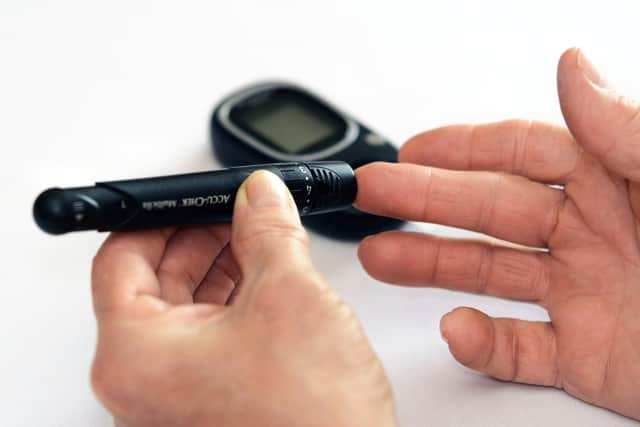Diabetes: What is the difference between type 1 and type 2 and what treatments are available
and live on Freeview channel 276
Are there different types of diabetes?
Yes, there are two main types.
Type 1 is where the body’s immune system attacks and destroys the cells that produce insulin. It is a genetic condition that often shows up early in life.


Type 2 diabetes is where the body does not produce enough insulin, or the body’s cells do not react to insulin. It is mainly lifestyle-related and develops over time.
Do type 1 diabetics take insulin?
Advertisement
Hide AdAdvertisement
Hide AdIf you have type 1 diabetes, you'll need to take insulin shots (or wear an insulin pump) every day. Insulin is needed to manage your blood sugar levels and give your body energy. You can't take insulin as a pill. That's because the acid in your stomach would destroy it before it could get into your bloodstream.
Is there a cure?
There is no cure for type 1 or type 2 diabetes.
What treatments are available?
Type 2 diabetes is treated with changes in your diet and depending on the response of your blood glucose levels, sometimes tablets and insulin. Early in the course of type 2 diabetes, planned weight loss can even reverse the disease.
Everyone with type 1 diabetes needs to take insulin. Some people will inject it and others may use a pump.
Who discovered insulin?
Insulin was discovered by Sir Frederick G Banting, Charles H Best and JJR Macleod at the University of Toronto in 1921 and it was later purified by James B Collip.
What are the symptoms of diabetes?
Advertisement
Hide AdAdvertisement
Hide AdThe common symptoms of diabetes include going to the toilet a lot, especially at night, being really thirsty, feeling more tired than usual, losing weight without trying to, genital itching or thrush, cuts and wounds taking longer to heal, blurred eyesight and increased hunger.
How many people have diabetes?
Around 90 per cent of people with diabetes have type 2 with around eight per cent of people with type 1, and about two per cent of people with diabetes have rarer types.
Diabetes UK predicts that up to 1,000,000 people in the UK have diabetes that is yet to be diagnosed. This means that, including the number of undiagnosed people,
there is estimated to be over 4.8 million people living with diabetes in the UK at present.
What happens if you don’t treat diabetes?
Advertisement
Hide AdAdvertisement
Hide AdHaving type 2 diabetes without treatment means that high sugar levels in your blood can seriously damage parts of your body, including your eyes, heart and feet. These are called the complications of diabetes. But with the right treatment and care, you can live well with type 2 diabetes and reduce your risk of developing them.
If you don’t treat type 1 without insulin, your body will break down its own fat and muscle, resulting in weight loss. This can lead to a serious short-term condition called diabetic ketoacidosis. This is when the bloodstream becomes acidic, you develop dangerous levels of ketones in your blood stream and become severely dehydrated.
Does it impact travelling?
You can travel anywhere with diabetes. You just have to prepare to avoid any problems.